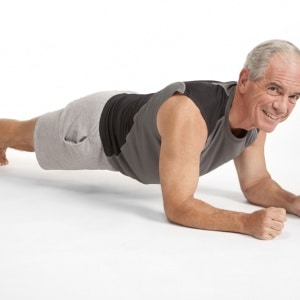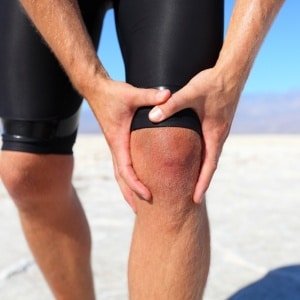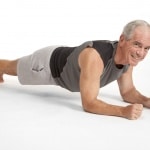 May 2024
May 2024
Hypertrophy and Strength Gains After 75
A study out of Chile aimed to find out if old-old (>85) get similar strength and muscle growth as young-old – that is, 65-75 – from a similar resistance training (RT) program. Knowing that muscle size diminishes with age – called sarcopenia – and that size is a determinant of strength, it is important that the wellness and fitness community evaluates the effectiveness of RT to keep those over 85 healthy and fit. Since the old-old have many forces that mitigate such gains – protein synthesis resistance, neuromuscular, mitochondrial dysfunction, chronic low-grade, systemic inflammation, etc. – they instituted a 12-wk, 3/wk whole-body RT program to two groups of elders volunteers: a 65-75 y/old and an >85 y/old group. No dietary changes were made.

Both groups saw similar changes in the size of the quadriceps although the >85s started with smaller muscles and didn’t catch up to those of their younger peers. The lower lumbar spine muscles, however, were not that different between groups at the start and at the end of the program.
Likewise, both groups had a 2-5% increase in whole body and upper body lean muscle mass.
For the most part, leg extension and leg press strength increased along the same trajectories with the >85s having larger percentage changes having started at lower strength levels. Too, the old-old saw greater functional gains than the young-old but not in absolute terms.
This study demonstrates that it’s never too late to get your body back in shape for better, healthier living.
Int’l Journal of Sport Nutrition and Exercise Metabolism, Oct. 2023
If You Get a New Joint, Don’t Waste It Sitting Around
Many people with painful, achy, misshaped lower body joints resort to months or years of inactivity in anticipation of getting a new joint called an arthroplasty. We’ve discussed the ins and outs of these procedures here and here. They often claim that they will start or resume an active lifestyle once they are out of pain and able to move better. But do they really do so? According to British researchers, the answer is yes!
Rather than depending on self-reported measures of post-arthroplasty of the knee and hip, this study “analysed wrist-worn accelerometer data” collected over a 3-yr span of patients listed in the UK Biobank. It compared the self-reported plus accelerometer data on 3,506 patients who’d had a primary or revision arthroplasty to more than 68,000 non-arthritic controls.

In other words, many arthroplasty patients – at least in England – do take advantage of their new joints. Shouldn’t you?
MSSE Dec. 2023
Tid Bits
A very large, Harvard-led study (Am J of Clinical Nutrition Oct. 2023) that followed over 200,000 people for up to 36 years found that “those who regularly ate the highest amounts [or red meat] – averaging about a serving each day – were 53% more likely to develop diabetes than those who ate the least” amounts. Those how had a serving of nuts or beans instead of red meat were 30% less likely to develop diabetes. Harvard Women’s Health Watch, Feb. 2024
Belly – otherwise known as visceral – fat, that is, the fat that surrounds our organs, is known to be more of a health gage than is subcutaneous – that is, under the skin – fat. Now, a new study in the journal Aging and Disease (Aug. 2023) reports that the more visceral fat you have, especially for women, the less brain tissue you have. This is compounded by the added effect of increased subcutaneous fat, more so in women than in men who had even greater levels of visceral fat. Specifically, the “brain regions involved in thinking, memory, and performing everyday tasks” seem to be most affected. Harvard Women’s Health Watch, Feb. 2024
The mass of evidence that supports the use of aerobic exercise (AE) as a premier way to reduce the risk of cardiovascular/heart disease is overwhelming. Over the past 40 years, resistance exercise (RE) has demonstrated that it, too, can contribute to heart health. The findings of a European Heart Journal (Jan. 2024) study that divided 400 people (ages 35-70) into 4 groups – ACE, RE, ACE+RE and a non-exercise control group – demonstrated that a thrice-weekly exercise program lasting 60 minutes reduced the risk of heart disease. Whereas the ACE and ACE+RE groups derived said benefits, alone the RE group did not. However, as expected, those who did RE also increased muscle strength. The authors concluded that 3 x 30 mins of cardio/wk are great, but 3×30 mins/wk of RE are also worth while. Harvard Health Letter Apr. 2024














